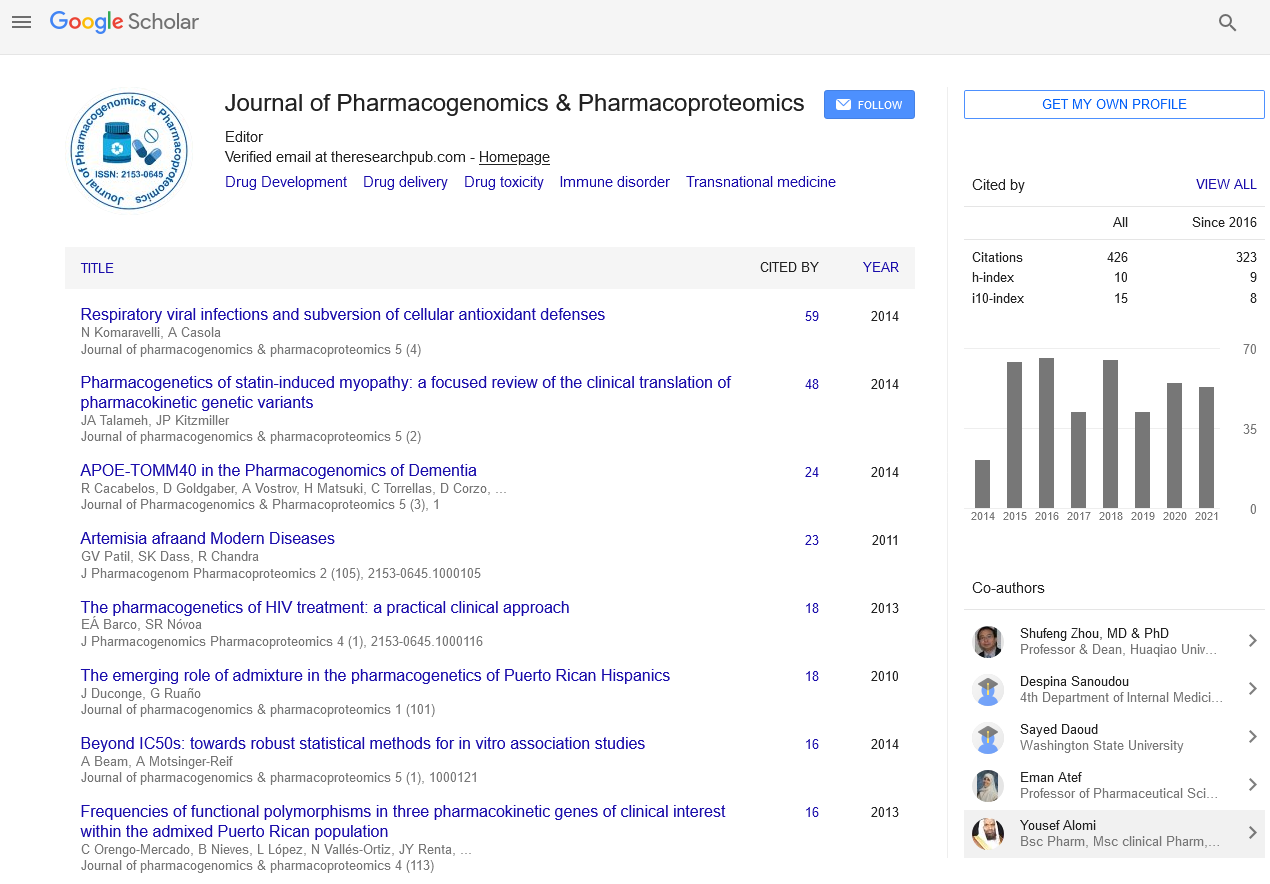Indexed In
- Open J Gate
- Genamics JournalSeek
- Academic Keys
- JournalTOCs
- ResearchBible
- Electronic Journals Library
- RefSeek
- Hamdard University
- EBSCO A-Z
- OCLC- WorldCat
- Proquest Summons
- SWB online catalog
- Virtual Library of Biology (vifabio)
- Publons
- MIAR
- Euro Pub
- Google Scholar
Useful Links
Share This Page
Journal Flyer

Open Access Journals
- Agri and Aquaculture
- Biochemistry
- Bioinformatics & Systems Biology
- Business & Management
- Chemistry
- Clinical Sciences
- Engineering
- Food & Nutrition
- General Science
- Genetics & Molecular Biology
- Immunology & Microbiology
- Medical Sciences
- Neuroscience & Psychology
- Nursing & Health Care
- Pharmaceutical Sciences
Abstract
Prediction of 5-Fluorouracil Toxicity Associated With Dihydropyrimidine Dehydrogenase Gene (DPYD) Polymorphism Using the Secondary Structure Prediction Programs
5-fluorouracil (5-FU) is rapidly degraded by dihydropyrimidine dehydrogenase (DPD), the first and rate-limiting enzyme in the catabolic pathway of 5-FU and pyrimidines. A tolerable therapeutic dose of 5-FU for a DPD-normal patient can make a DPD-deficient patient intolerable. These inter-individual variations in the body?s response and tolerance to drugs can be attributed to dihydropyrimidine dehydrogenase gene (DPYD) single nucleotide polymorphisms (SNPs), among others. To save a patient?s life and money, health professionals need a convenient and reliable way to find out a patient?s tolerance to 5-FU prior to clinical trials or 5-FU therapy. Here I present a simple, easy and fast way to predict an individual?s intolerance to 5-FU using the secondary structure prediction programs, YASPIN, PSIPRED and Jpred 3, freely available to anyone. These programs predict the DPD secondary structure with and without mutation (s) within DPYD so that an impact of the mutation-induced structural changes on functional sites of human DPD domains can be deduced. Among 11 SNPs analyzed as samples, two missense mutations, D949V (SNP A2846T) and C953S (SNP G2858C), in the DPD domain V are predicted to cause disruption of the domain core responsible for [4Fe-4S] clusters. Furthermore, a point mutation in a splicing region (In 14 G1A) in DPYD is predicted to produce truncated DPD mRNAs (exon 14 skipping) and disabled DPD proteins (missing 55 amino acids from D581 to N635) which cause a complete loss of DPD activity. SWISS-MODEL predicts significant change in the three dimensional structures of human DPD in the presence of exon 14 skipping, D949V and C953S mutation. Thus, prediction by these secondary structure prediction programs provides useful and reliable information about toxicity associated 5-FU due to mutation (s) in DPYD.


